#Mesoamerican influence
Explore tagged Tumblr posts
Text
Hidden Temple
“Hidden Temple” captivates with a striking portrayal of a mythological site concealed deep within the jungle. The artist has used a vibrant palette of blues, purples, and greens, blending them to evoke an eerie, mystical ambiance. The large, carved face in the rock is a powerful focal point, its features looming over the viewer as though guarding the secrets held within. This grand visage, with…
#adventure painting#ancient civilization art#ancient temple art#Cosmic Horror#eldritch art#explorer art#fantasy landscape#forgotten gods#hidden secrets art#jungle ruins#jungle temple painting#lost civilization#Mesoamerican influence#mysterious ruins#mystical temple#mythological art#overgrown temple#spiritual journey art#temple of the gods
0 notes
Text
it's actually so so soo cool to me that miguel's suit is a hologram and performs like an LED screen on his body; i love that they added this detail bc it gives so much depth to his suit that would otherwise be lost like it makes the meso american inspired patterns on his suit such an enagmatic glow and makes his suit so cool to look at!!! just a million stars glowing on him !!!
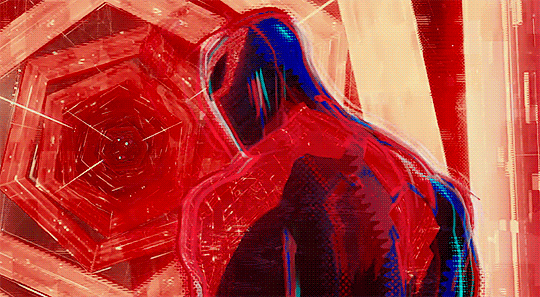
SEE !!! THE CIRCUITRY... ITS SO FUCKING COOL !!!
#i just think he's neat#little fuckin nerd miguel trying to make himself a cool looking suit after he literally expanded to twice his previous size lol#he has the pantone app open on his monitor#“lyla change the red from DF1F2D to B11313”#my personal hc is that he for sure added the mesoamerican influences much later on bc he had a spidey moment with a little latine kid#saved a kid downtown from those public eye goons and the kid looks up half scared/half in awe at his stature#the kid's guardian yells something in spanish while running towards them#so naturally#he squats down to be eye level with the kid and says something along the lines of “everything's gonna be alright kid” in spanish#and he swings away#but just out of his peripherals he sees the kid lose their mind#he picks up a faint gracias or other term of gratitude and lets a small smile escape his lips#and then he starts to notice just how many spider ppl have incorporated their heritage/nationality into their costume#and he's reminded of that kid#how excited they were to share something as binding as their mother tongue with thee spiderman#now all of a sudden he's spent the next 16 hours trying to incorporate traditional mesoamerican patterns into his costume's design#maybe it's lyla's idea to make them golden looking so they're endlessly shifting in a stunning contrast against the red#my miguelito#yeah#im totally normal abt him btw#idgaf actually#spidey#i can fix him#miguel o'hara#atsv miguel#miguel spiderverse#miguel spiderman#spiderman 2099#spiderman atsv#spider verse
9 notes
·
View notes
Photo
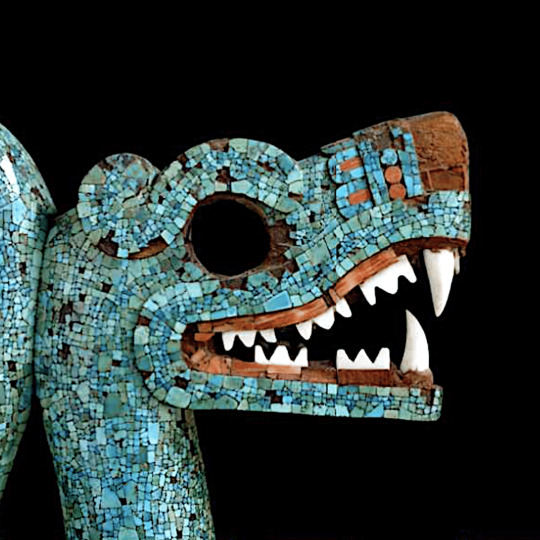
Aztec Religion & Culture
Aztec religion and culture flourished between c. 1345 and 1521 and, at its height, influenced the majority of the people of northern Mesoamerica. Great monarchs such as Montezuma imposed Aztec ideals across the area of modern-day Mexico, influencing the region’s art, architecture, and cultural values. Their influence was so widespread that they remain the best-documented Mesoamerican civilization in history.
This collection presents a brief survey of some of the most significant aspects of the Aztec Civilization.
Continue reading...
115 notes
·
View notes
Text
LoZ: TotK - The Zonai Role Reversal Theory
Honestly, I always find certain fans’ animosity towards Rauru & his sister for “colonizing” Hyrule to be utterly ridiculous & even a smidge ironic.
For one, how the hey does 2 people colonize an entire country with 5 different races living there?
Secondly, because for all of their outcries, those fans completely fail to see that the Zonai essentially represent a complete historical role reversal.
Think about it. A more technogocally-advanced, but clearly Mesoamerican-coded person comes to a less advanced, but clearly European-based country & unites the warring tribes there under their rule…
Nintendo flipped the Spanish conquest of Central America & I have no idea why I haven't seen anyone else bringing it up. Because, to me, it’s hilarious!
I’m not sure why, but maybe I just find the idea fascinating to think about. I mean, I've always sort of wondered how the natives of the Americas would develop & advance on their own. The sort of technology they'd invent. Stuff like that.
So, seeing the Zonai’s mesoamerican influences being so predominant might simply be fulfilling that curiosity?
Either way, the next time I see someone getting mouthy about how "the Zonai are imperialistic oppressors," I might just slip out a, "Aaah, you just don't like seeing Latinos holding higher offices than white people. Guess you wouldn't appreciate having one as a president, either, huh?"
LoZ Wild Masterlist
#legend of zelda#loz#tears of the kingdom#totk#rauru#zonai#mineru#history#spanish conquest#central american history
21 notes
·
View notes
Text
No-fun-allowed Sonic fans: Knuckles can’t be Black because SA1 used Mesoamerican influences to represent echidna culture.
Mixed people: Am I a joke to you?
#knuckles the echidna#sonic the hedgehog#txt#ez.post#this has been on my mind for a while#esp since I recently started seeing debates where ppl use this fact as a gotcha to deny Knux’s Blackness#not here but on fb and twitter#it’s not impossible to have mutiple influences for his character#that’s the beauty of world building#anyway Afro-Indigenous Knux my beloved
686 notes
·
View notes
Text
Nayivi'nui'ivi - Queerness/People with two faces

Nayivi - Person or Human Nuu - Face Ivi - Two The tone in NUU is a little different, the last U in Nuu is a little Lower! This phrase is a bit strange because I've heard stories from people telling me how queerness is seen in Mixtec towns. They're seen as sorcerers, good luck charms, people with the ability to curse people. Perhaps this comes from suspicions from Spanish/Christian influence. In mesoamerican times, the face/head was said to hold a special power, called Tonali in Nahuatl! The belief is common all over Mexico. And masks were special too in these traditions, said to hold the power of the gods they represented, So literally putting on a mask and dressing in their image was said to make that person literally that god! I think this applies to myself as a trans woman, I have two faces, one in the physical, and another in the spiritual, the face I project into the world itself, I can interface with both just as easily. Maybe that makes me super lucky? Well probably not. Still its a fun thought. Masks are funny to think about.
Next page: Shoho'Inu - Rage/Boiling Insides
126 notes
·
View notes
Text
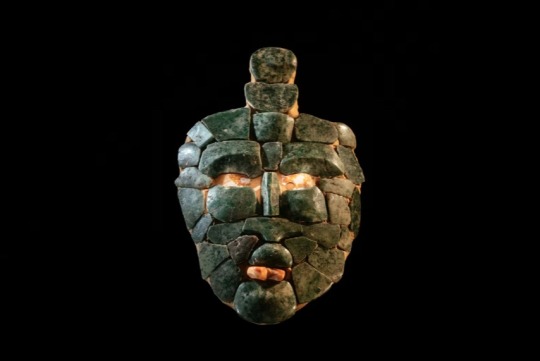

Jade Mosaic Mask Discovered in Maya King's Royal Tomb
Revealing rare treasures and royal lineage.
A Tulane University archaeologist has recently discovered an ancient Maya tomb dating back 1,700 years at the site of Chochkitam in Guatemala near the borders of Mexico and Belize.
The tomb’s remarkable funeral offerings, such as a mosaic jade mask, rare mollusk shells, and writings carved in human femur bones, provide valuable insights into Maya civilization. The discovery includes depictions of a previously unknown king believed to be holding a jade mask similar to the one found in the tomb.
Hieroglyphs on the artifact are thought to connect the ruler to the Maya states of Tikal and Teotihuacan, providing historical and genealogical information.
This discovery is like winning the lottery in terms of information. It opens a window into an obscure time we have little texts about. The newly discovered tomb from the Maya classic period, dating from 250-900 AD, is a significant find given the limited remnants from this era, primarily affected by looting.

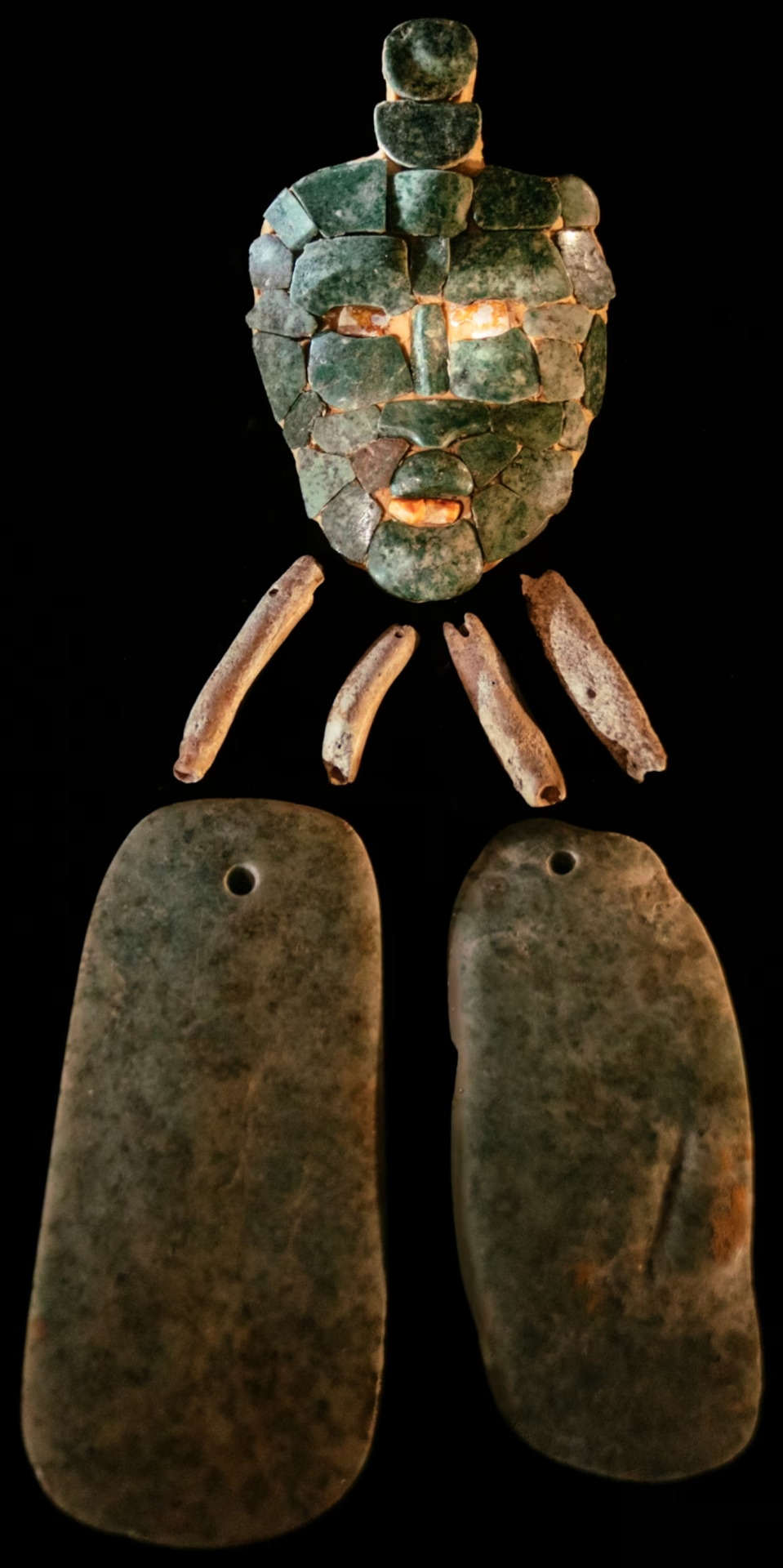

The tomb, located just 2 meters away from where looters had previously stopped, is remarkably well-preserved, with minimal damage aside from the natural decay and the collapse of the stone ceiling. This fortunate preservation provides archaeologists with a rare opportunity to explore the rich history and offerings within the tomb.
Estrada-Belli, a research assistant professor in the Tulane University School of Liberal Arts, said, “That was the first amazing thing about it. It was fortunate.”
Lidar technology played a crucial role in the tomb’s discovery by enabling archaeologists to detect looters’ tunnels and map the jungle floor precisely. This advanced technology, akin to ‘taking x-rays of the jungle floor,’ revolutionizes archaeological exploration, allowing researchers to navigate more efficiently through dense vegetation.
The tomb’s contents, including over 16 rare spondylus shells, provide valuable insights into ancient Maya practices, emphasizing their significance in royal contexts as symbols of wealth and elements used in religious and sacrificial ceremonies.

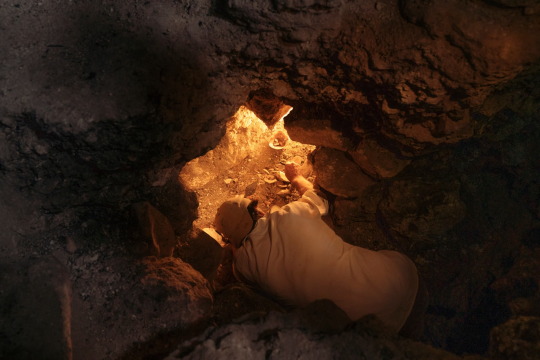

The relics from the tomb, dating back to 350 CE, establish a historical link between Tikal and the central Mexican site of Teotihuacan. This connection sheds light on the cultural exchanges and influences between Maya rulers and the wider Mesoamerican region during the Maya classic period.
The tomb’s contents, including a mosaic jade mask and hieroglyphs carved on human femur bones, offer insights into religious practices and royal lineage, enriching our understanding of ancient Maya civilization. The discovery at Chochkitam, after a century since Fran Blom’s initial exploration, underscores the significance of continued archaeological efforts.
Estrada-Belli said the next stage in his work at the site will be to conduct DNA testing on the bones and maybe uncover additional essential contents buried within the abandoned pyramid.
By Amit Malewar.
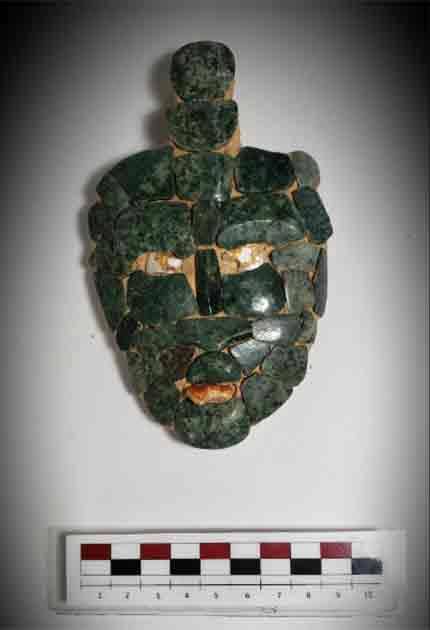
#Jade Mosaic Mask Discovered in Maya King's Royal Tomb#Chochkitam#Guatemala#ancient grave#ancient tomb#royal tomb#jade#ancient artifacts#archeology#archeolgst#history#history news#ancient history#ancient culture#ancient civilizations#maya history#maya art
85 notes
·
View notes
Text
Cultural references of Citlali
Citlali is my favorite character in Natlan and I haven’t seen people talking about her amazing but subtle elements in her design, she seems to have mostly Aztec and Mexica references which makes sense since these two communities were intertwined with each other at some point in history, I just wanna ramble about the elements I noticed! ;
DISCLAMER
If you think I got smth wrong tell me, even though I’m Mexican I cannot memorize every single detail about the cultural groups I’m talking about (Mexica/Aztec) , I had to do some research for this :P, if you also think there’s more elements I would absolutely love to start a conversation!!!! I love discussing the cultural aspects of Natlan as a whole!!! Also I know Natlan is based on the “ring of fire”, hence, I will not speak about cultures that I’m not a part of until I have done the proper research!
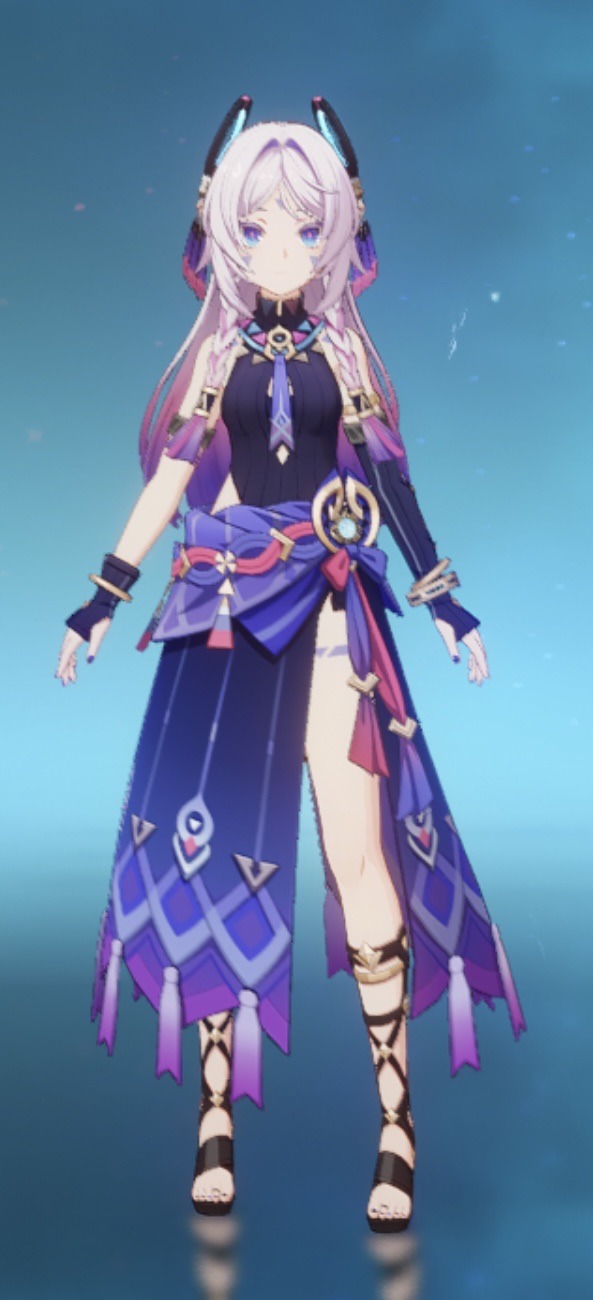
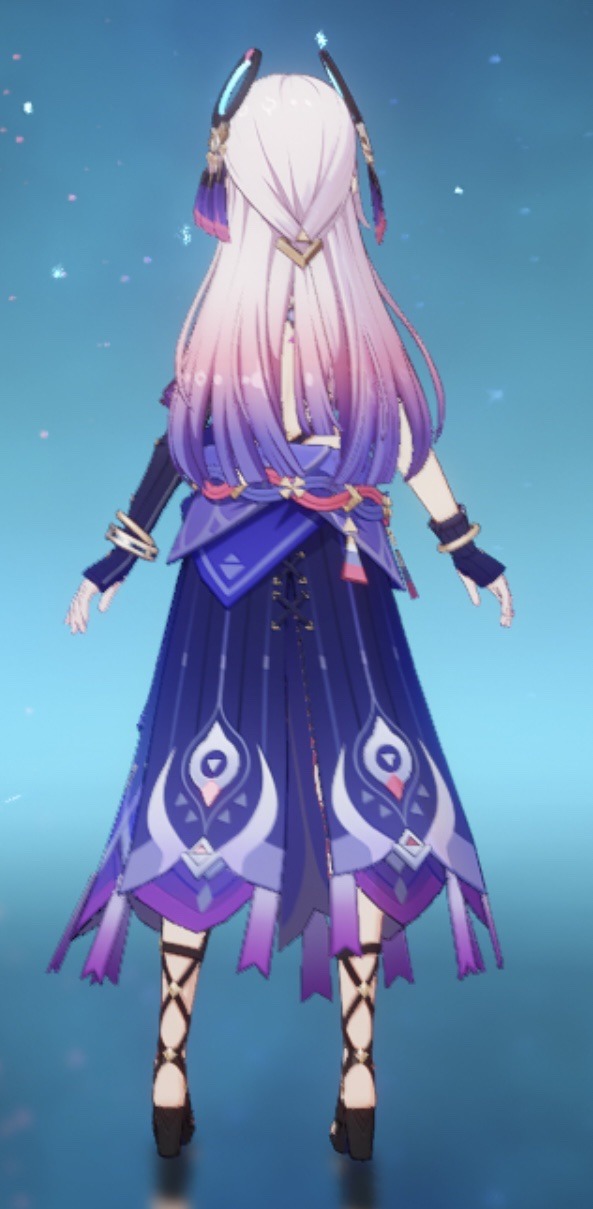
Name Origin!
Citlali’s name means star, but it’s also a derivative from the goddess Citlallicue, which can mean “skirt of stars”. In Mexica mythology she’s the creator of stars, and goddess of the milkyway, there’s also some writings which have Citlaltonac as her husband, but others say it’s just another variation of her name

Possible color inspiration
Citlali’s pink color palette is not a coincidence, she seems to be based on an axolotl, specifically the Ambyosta Rosacium, whose colors are a result of albinism
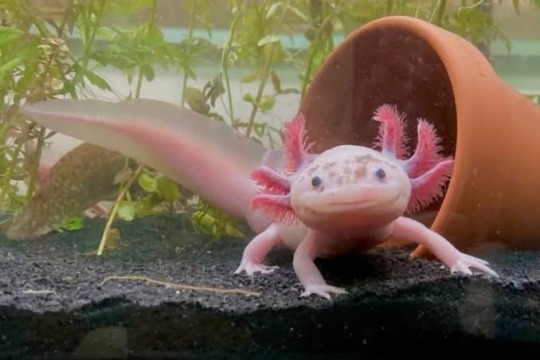
these animals have the ability of regeneration and keep several of their larva characteristics in their adulthood, the axolotl was thought to have eternal life because of their regeneration capabilities, or “eternal youth” in a sense
the Mexicas tought that this animal was the god Xolotl, the aztec god of the sun, and also called the “afternoon star”

Cultural references
Ilamatecutli could also be another variant of Citlallicue, in Mexica mythology she is the goddess of wisdom and old age, she was also the “feminine representation of old age” in some writings, other variants are “the old lady” and “custodian of traditions, fertility, earth and the knowledge passed down through generations”.
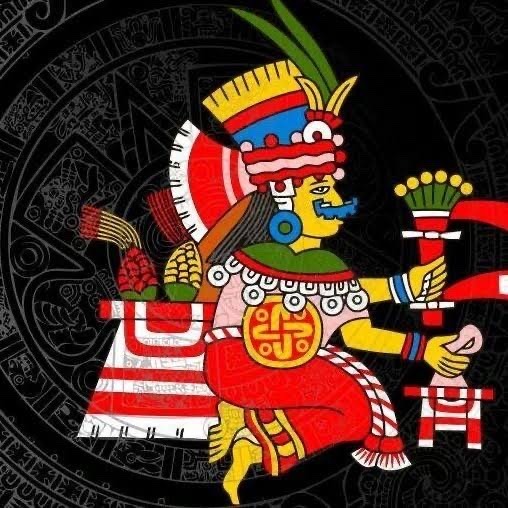
Ilamatecutli was also thought to be another variant of Chicomecoatl, goddess of corn, or the “old corn”, while this may be reaching I wonder if that also influenced her black/purple color palettes since there is the purple/black corn variant
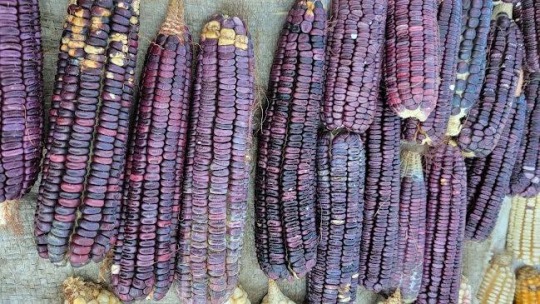
Her dark purple tones can also be a reference to obsidian which was used in all of Mesoamerican for a variety of reason, but I want to highlight that it was used to create “obsidian mirrors” by the Aztecs, I believe this is where her nickname came from since these objects were called itzli! These mirrors had the power to reveal hidden truths, communicate with the spiritual world, and predict the future. Shamans and priests used these during various ceremonies along with other objects

The instrument used to make this textiles is actually called “telar de cintura” the most literal translation would be “waist loom”, but it seems that the translated English word is “blackstrap loom” probably pointing at her skirt in her design! Her entire desing is also filled with both Aztec and Mexica elements such as the triangle and diamond motifs, plus the “eyes” that characterize her tribe


That’s the cultural elements I could notice from Citlali, she’s my favorite character from not only from a design standpoint but also personality wise, and as a Mexican I am absolutely floored that I was able to recognize so many little details from Mexica and Aztec culture after researching her design !!!! I am also thinking of making a Kinich post since he seems to have various Mayan influences
#genshin impact#pop rambles#citlali#citlali genshin#I love how I could recognize so many cultural references in Natlan#absolutely my favorite region environment wise#Natlan designs
18 notes
·
View notes
Text
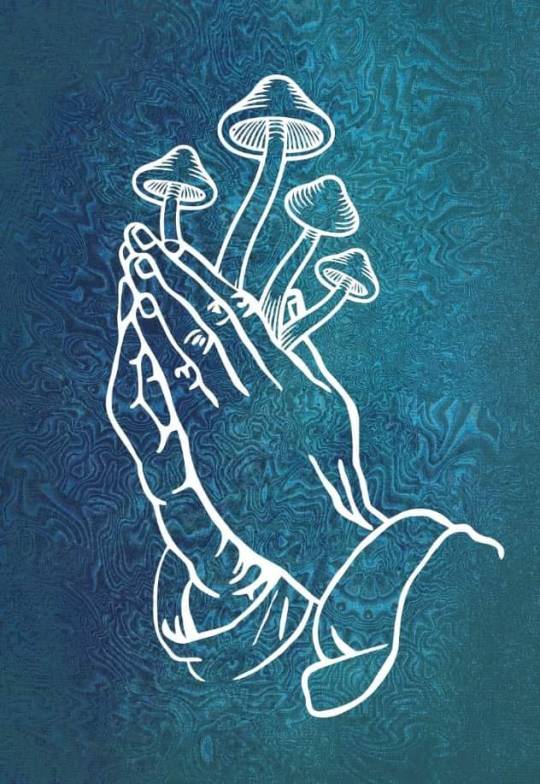
“The function of prayer is not to influence God, but rather to change the nature of the one who prays.” ― Soren Kierkegaard
The Aztec Culture Used Lots of Hallucinogenic Substances
The Aztecs were a Mesoamerican culture that formed in mid-Mexico around the year 1300 AD. The Aztecs are considered the ancestors of modern-day Nahuas, Mexico’s largest recognized indigenous group. The Aztec culture was highly interwoven with their religion, which focused on the worship of multiple deities including Tlaloc, Quetzalcoatl, Tezcatlipoca, Xochipilli, and several more. And they are especially well-known for their extensive usage of hallucinogenic substances such as Teotlnanáctl mushrooms.
The Aztecs believed that these deities were responsible for creating the universe and keeping it functioning. If the gods were not pleased, they may cease to keep the Sun burning or prevent the Earth from receiving resources. To placate the gods, they frequently engaged in blood sacrifices of both animals and their own people. A sacrifice would ultimately thank the Earth for her fruitfulness and encourage the gods to continually revive the Sun. Their religious life also revolved around calendars, a ritual calendar that was 260 days long, and a solar calendar that was 365 days long.
The use of entheogens is a common theme amongst Aztec artifacts recovered from Mesoamerica. Entheogens are psychoactive substances that induce alterations in perception, mood, consciousness, cognition, or behavior in sacred contexts. Sculptures, statues, paintings, writings, and even fossilized remains of various entheogens (such as the Bufo toad) all point to the regular consumption of hallucinogenic substances within Aztec civilization. The Florentine Codex, a research study performed by Bernardino de Sahahun in the 16th century, actually identifies at least five specific entheogens used by the Aztecs.
Research suggests that outside of regular use by citizens during festivals and times of celebration, these hallucinogenic plants were predominantly used by officials, including priests and nobility. They would also be shared with visiting dignitaries as a form of welcome. Priests traditionally used the plants to engage in religious activities including divination, prophecy, healing, and dream interpretation.
Teotlnanácatl: In Search of the Aztec 'God's Flesh' Psychedelic Mushroom
33 notes
·
View notes
Note
Talking about possible mesoamerican influence, they too placed great significance and research into the cycles of the sky, the movement of the stars the sun and the moon
" In common with many other indigenous Mesoamerican civilizations, the Aztecs put great ritual emphasis on calendrics, and scheduled festivals, government ceremonies, and even war around key transition dates in the Aztec calendar. "
Yes I saw your post!! Thank you for reminding me about the Mesoamerican influences in Rain World, I definitely think it ties into the theme of cycles and rebirth and whatnot. I completely forgot about it but a while ago I was bouncing around an idea in my brain about how the Cycle mirrors the circular nature of several Mesoamerican calendars. I need to do more research in that area if I want to actually come up with anything concrete, though.
At least in terms of Ancient astronomy, I think they would place importance on the movements of celestial bodies for similar reasons. In our own world, very early astronomy was developed as a form of time-keeping first and foremost, leading to the development of calendars and standardized units of time. (For example the word "month" comes from "moon" in English, and lots of other languages derive their words for "month" from "moon" as well).
On a metaphorical level the movements of celestial bodies represent the world's different cycles, particularly the cycle of death and rebirth. This is a common theme across many human cultures, and is of course another big theme in Rain World.
16 notes
·
View notes
Text
Analyzing the Shadow Kings Part 5 - Pride
Woo hoo! Mild spoilers and I haven't read every appearance of this character.

Hybris get his name directly from Hybris the Greek personification of insolence. This lesser known goddess is also where we get the word hubris which is used to describe someone with excessive pride.

Hybris is a large bat furry with white skin, dark fur around his head and in other locations, and two wings. He is dressed ornately covered in gold jewelry, holding a fancy gold and black cane, he has a tattered red ribbon , and while he doesn't have a shirt he wears loose pants with a loincloth covering his privates.
Notably he has flat nose like some bats, sharp yellow nails on his hands and feet, four ears, his eyes have yellow iris with red sclera, he also has a third eye on his forehead. He has wrinkles around his eyes and markings reminiscent of eyeliner as well.
I don't know why Hybris is a bat. The other Amberdon gods and have an obvious Egyptian mythology connection. He could be based off Camazotz from Mesoamerican mythology as he is depicted as a leaf nosed bat (and is arguably the most famous bat related deity). OR he could have references to the Minyades of greek myth who went mad during a dionysion revel and at the end of the myth get turned into bats. I only bring up the Minyades because the myth is similar to how Hybris acts after Jalam activates the vessel of mimicry.
Hybris is usually very snide and manipulative to those around him. He is very patronizing often giving overly excited or backhanded compliments. Hybris will also switch to being a lecherous old man at the drop of a hat doing things like flashing people and describing what he wants in explicit detail.
Hybris breaks a tradition of the shadow kings by first appearing in the final episode of the previous chapter instead of the middle of chapter 5. He appears before Elaine protecting her from mummies before revealing he manipulated her into betraying her friends under the false promise of saving her father. Getting the empty vessel from Elaine.
For the rest of the chapter he takes a backseat to Jalam and Zacharoff subtly manipulating the pair. If you don't look at the "nsfw" scenes involving Zacharoff you instead get Hybris speaking to the king.
Hybris's plan was to copy the empty vessel and using that copy to ascend either Jalam or Zacharoff into true godhood. From there the demon would buy his time until he could steal the throne of god from them for himself.
His plan failed when Gaia finally transformed into a full fledged dragon god himself, and defeated Zacharoff. In a pretty vindicating scene for me Jalam finally does something right and shuts Hybris up after the shadow king starts belittling Zacharoff for his loss.
Hybris doesn't change all that much after chapter 5 he still follows Jalam and Zacharoff around making snide or perverted comments. I feel what changes more is that the other characters don't really listen to him as much so he has less influence as a whole.
I have a huge blind spot for Amberdon characters (Elaine and Zacharoff are two of my favs). So I do have a built in blind spot for this shitty old man. He fills the niche of bitchy old queen so well it would be so fun to just heckle things with the guy.
8 notes
·
View notes
Text
CHAKOTAYS TRIBE !!!!!! PLEASE READ IF YOU WANT TO KNOW HIS TRIBE!!!! I'VE DONE RESEARCH TO TRY AND FIND THE ANSWER!! <3
What the hell even is Chakotays tribe??? Would it be a surprise that there is an answer to that? What tribe he was based on has been questioned for a while and I’ve only seen a few people come close to a proper answer. I’ve seen people say that he is of Navajo/Dine descent or Ojibwe. I wouldn’t say any of those are wrong as his “traditions” were all over the place it made it hard to tell. Our first bit of evidence is the location he and his father traveled to in the episode “Tattoo”. Now this is my least favorite episode in Voyager, almost as worst as TNG’s Code of honor lol. So, it’s always hard to watch and I haven’t done so in a while, but I do remember they said they traveled to Central America. Obviously, this makes up a few different countries and tribes, but the most predominant Nation in this area are the Maya. I’ve been doing tons of research on this matter, and its literally impossible to compare Chakotay’s tribe to an individual Maya tribe. This is where the writers used the “Hollywood Indian” stereotype because its just all over the place. Other than the location, a few things that gives it away is the name of his tribe. They call themselves the “Rubber Tree People”. If you are familiar with Mesoamerican history, you would know that this is what “Olmec” is roughly translated to. Linguists were able to translate it from the Nahuatl word “Olmecatl” meaning “the rubber people who live on this land”. The rubber tree also plays a significant role in Mesoamerican tribes. The rubber from the tree was used to make the ball for the sacred game of “ulama”. Which played an important role of in the creation story in the Popol Vuh about the Hero Twins. The Olmecs came before the Maya and Aztec, but a lot of Olmec culture influenced their own. Whether or not Chakotay’s tribe were direct descendants of the Olmecs is unknown to me. It wouldn’t make much since historically speaking, but it would fit the narrative of the episode “tattoo”. Another indication would be one of his decedents, Ce Acatl. Ce Acatl Topiltzin was a real person who was a ruler of the Toltecs. I’ve only read a lil bit bout him so I won’t speak on what he did or who he was until I’ve done more research. Finally, one of the other MAJOR indications to me was in his short background story of pathways. I am aware that these are not canon, but it gives a glimpse into what the creators had in mind while creating theses characters. The literal first page is his father recounting a story from the Popol Vuh, and he’s talking about the Hero Twins, Seven Macaw, and the Maize God. My mind was blown when I read that, cause I started research about this a few yeas ago and was using clues from the show and figured since I had read the book before and didn’t remember any significant information about his tribe, there wasn’t any point to open it up. I read the book again at the beginning of the year and lost my mind. All of my answers were there lol. But it confirmed what I already knew. I felt hella proud cause I took the long way to get an answer and was still right. Anyways there’s still sooooo much to say about this and I’m working on a well put together paper explaining why the customs and traditions they gave him were wrong or confusing. I hope people will read cause I put a lot of research into it. I also have what I think to be some good lore that could fix a little bit of the damage that was done. More on that later though 😊.
#captain chakotay#chakotay#commander chakotay#peepaw chakotay#star trek voyager#st voyager#star trek#stvoy#papa chakotay#ignore spelling mistakes lol#robert beltran
94 notes
·
View notes
Photo
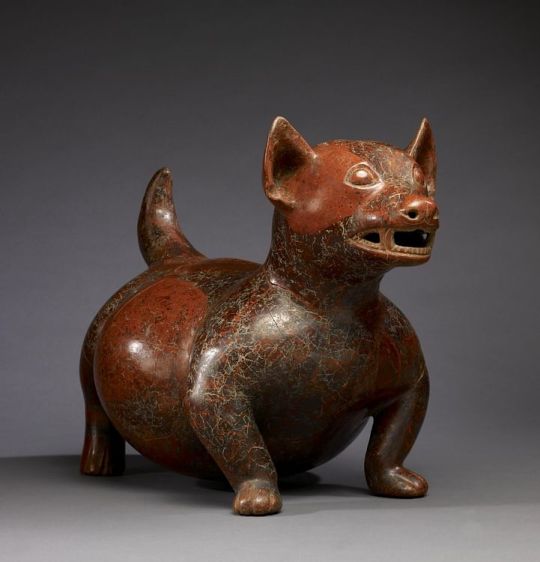
Dogs and Their Collars in Ancient Mesoamerica
Dogs were an integral aspect of the lives of the people of Mesoamerica regardless of their location or culture and, throughout the region, were recognized as liminal beings belonging not only to the natural world and that of humans but to this world and the next.
Dogs were believed by the Aztec, Maya, and Tarascan to travel between worlds, assist the souls of the dead, warn of dangers to the living and, at the same time, were regarded as a food source, companion, and guardian in daily life. The dogs of the indigenous people are frequently depicted without collars because it seems to have been thought that these would restrict the dog’s movement between worlds.
Even so, collars did exist – fashioned for humans to wear – and it is thought that these developed from dog collars. This model changed with the arrival of Christopher Columbus (l. 1451-1506) in the West Indies in 1492. Columbus’ dogs all wore collars and were much larger than the animals the natives were used to. The European dogs had also been trained for war and so were far more savage than any dog a Taino, for example, had ever known.
After Columbus, who sailed for Spain, more Spanish invaders arrived and made their way north through South America to Mesoamerica, bringing Christianity with them. Christianity began to replace indigenous beliefs and, as the Catholic Church claimed dogs had no souls, belief in the supernatural power of the dog declined. Although there were no doubt many indigenous peoples who still believed in the dog as a psychopomp, there is no widespread evidence of this belief after the arrival of the Spanish as compared with pre-Columbian Mesoamerica. The descendants of the ancient people of the region have only begun restoring their ancient cultures in the past 100 years and so, in time, the dog has slowly regained the status it once held.
Olmecs & Their Dogs
The Olmecs of Mesoamerica lived in the lowlands along the Gulf of Mexico c. 1400-400 BCE and bred dogs as food. The Olmecs are the oldest civilization in the western hemisphere, inventing the first written language of Mesoamerica as well as distinctive art and architecture which would influence the later civilizations of the Aztecs, Maya, and Tarascan, among others. The sacred animal of the Olmecs was the jaguar which was thought to be spiritually related to the dog. The dog was therefore associated with the divine while, at the same time, serving as a food source. There seems to have been no contradiction in this as dogs, servants and messengers of the gods, also served humanity by graciously offering themselves as food.
A tomb of the Zoque peoples, a Mesoamerican population thought to be descended from the Olmec, was discovered in 2010 in Chiapa de Corzo containing jade collars. These were ornamental collars for human wear but could have developed from the dog collar. The tomb dates to between 700-500 BCE and is the oldest pyramid tomb yet found in the region.
The indigenous people of modern-day Mexico, Belize, Guatemala, Honduras and neighboring regions, built pyramids as temples, not as tombs, and this find is thought to reflect an earlier Olmec practice of keeping precious objects in temples – one that was observed by later cultures. The jade collars, though clearly for human use, could have linked an officiant with the spirit of a liminal dog who would bring messages from the gods.
Continue reading...
45 notes
·
View notes
Text
I don't go here very often but the new pyro archon and the characters from this new area not having at least tan skin or darker literally is so embarrassing for the hoyo like. If Natlan is based on Mesoamerican or West African civilizations then where is the melanin. I thought the same about Sumeru tbh since a lot of characters have Islam names, or ancient Egypt influences. The colourism of this game is insane.
#genshin impact#just some thoughts#like....#i dont play genshin but its on my feed a LOT bc of artists making fanart#fiery rambles
16 notes
·
View notes
Text
now playing...my baby just cares for me - nina simone.
what im most excited for in my genshin dr
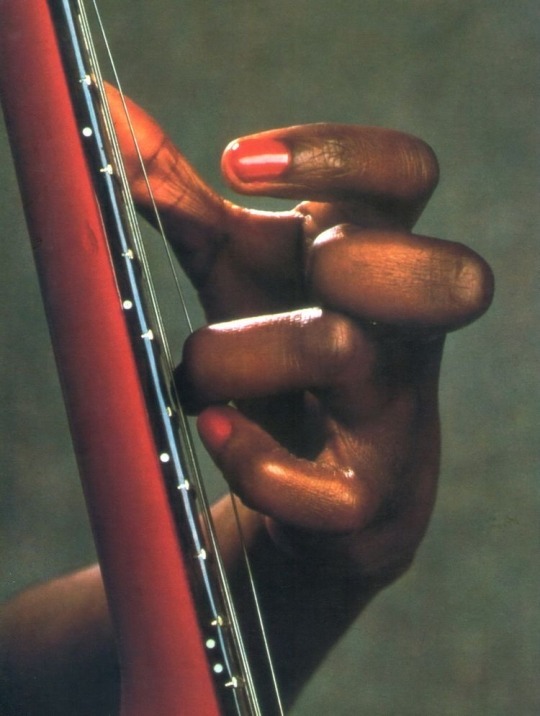


me shifting to genshin and it being one of my top three is kinda ironic since i dont especially like or play the game anymore lool.
family my family is one of the richest in teyvat. i have three siblings (and good parents because i need a support system, im not that strong) and im the youngest. my only sister and i have an antagonistic relationship, which im kinda excited for? im just curious idk i never had that w anyone.
intelligence God, im so excited to learn. ill be a polygot, alchemist and a explorer. i scripted leaving the akademiya in under four years and then becoming an adventurer because im not spending all my time cooped up in a college! fuck that!
job many, many jobs. i just think being able to have all that expirience will be so thrilling!! & my most anticipated job is an author. ive got my content figured out already too, social parodies & societal commentary.
setting im a worldbuilding *fiend*. so i took the liberties of changing teyvat. the continent is more archaic & historically accurate in terms of fashion, language and culture (so that means no tacky over designed outfits, gov’t workers in batty riders or people saying “bro” and “dude” 🙄) much more diversity as well, not just in terms of features and skin tone but lots more land & major cities per nation and a wide range of accents as well as discernible cultural differences across [domestic] regions. but still not super historically accurate, and veering more on “magical” like disney princess stories.
natlan lowk have no idea how natlans actual cultural design works? 💀 like i quit genshin so im lost on that front. but i split it in three distinct regions. tribe 1-2, which is of mesoamerican influence; tribe 3-4, with west african influence (where im from); and tribe 5-6 with polynesian influence. its the same “tribe” as in game (whatever tf those are) but with a different look. i like this system a lot tho.
s/o this is so cliche but he’s definitely a big ass part of my reason for shifting to genshin. like hes the only s/o i actually *go crazy* with scripting about the rest of them the “romance” is general and non descriptive. our love storys finna be sooo romantic i cant even. also we have a slight age difference and im excited to tease him about it.
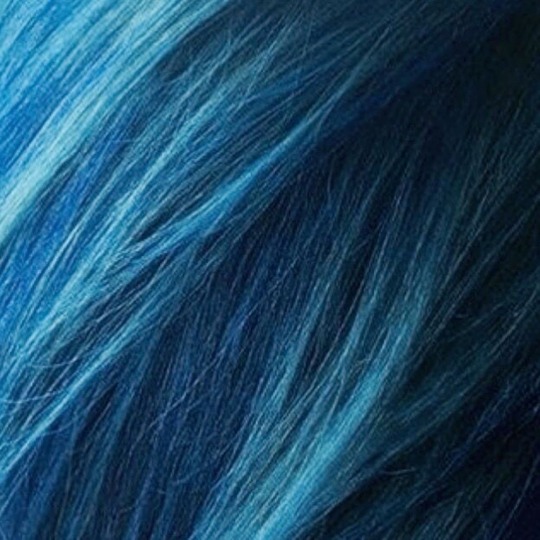

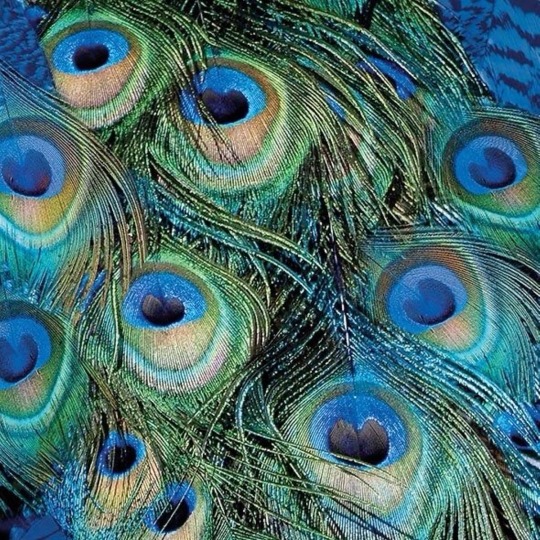
7 notes
·
View notes
Text
Round 1, Match 1: Northern Polychromes
I call these the "Northern Polychromes" because they are only (in Fourmile's case) or predominantly (in Salado types' case) found in Arizona and New Mexico.
Salado Polychrome
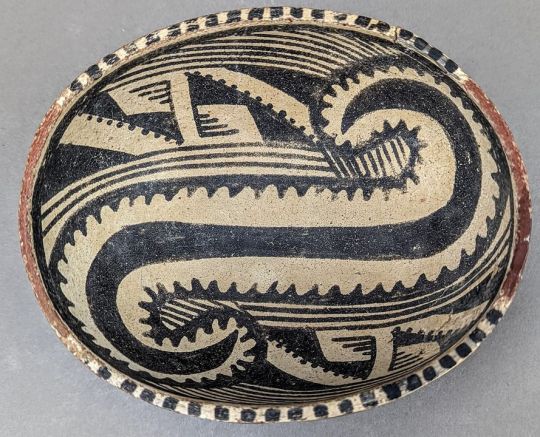
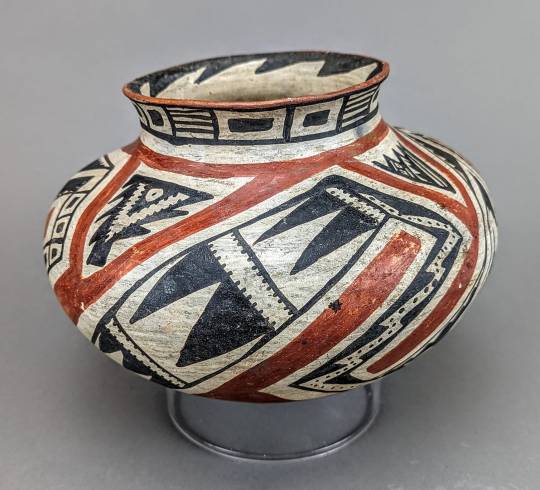
Left, Gila Polychrome oval bowl (AD 1300-1450); Right, Tonto Polychrome olla (AD 1340-1450). Arizona and New Mexico.
vs.
Fourmile Polychrome

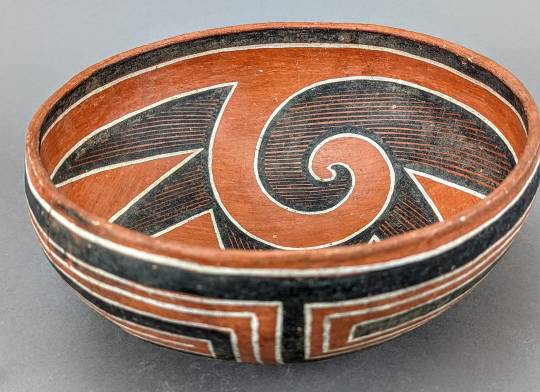
Fourmile Polychrome bowls, AD 1325-1400. Arizona.
More information about each type below the cut:
Salado Polychrome


Cliff Polychrome bowl, southeastern Arizona, AD 1350-1450.
Am I biased because this is what I'm writing my dissertation about so I've been thinking about Salado polys nonstop for about 3 years straight? MAYBE. But that's because they're interesting!
Salado polychrome is a collective name for various black, white, and red types of Roosevelt Red Ware. Pinto, Gila, and Tonto polychrome are the three main types, but there are a lot of described type variants.
Around AD 1275, there was a huge drought that lasted 20 years and impacted the whole Southwest. People moved out of the northern Southwest (Mesa Verde, the Four Corners area, southern Utah, northern Arizona) en masse. If you've ever heard of the "mystery" of the "disappearance" of the Anasazi - it's not a mystery, and they didn't disappear. There was a drought, crop failure, social/political instability, and they moved south to where there were population centers and perennial rivers. Some of these immigrants integrated into pre-existing towns; others formed their own enclave settlements.
And right around this time, a new style of pottery became popular in central/southern Arizona and western New Mexico. Like, really popular. Rapidly widespread, all but replacing the previous black-on-white and red-on-buff painted pottery. Gila polychrome (the most common type of Salado polychrome) is notable for being the most widespread decorated ware in the archaeological Southwest. Why?
Archaeologists debated this for decades upon decades. Were the Salado an immigrant group who brought this ware from the Tonto Basin, from the Sinagua, from the Colorado Plateau, from Mexico? Was it a Hohokam development? Was it Mesoamerican influence? You can read the debates back and forth in the 60s-80s and FEEL the palpable frustration!
Modern scholars basically agree that there's no "Salado" culture, that rather Ancestral Pueblo immigrants from the Kayenta and Tusayan regions of northeastern Arizona developed it after they moved to the south. These Salado polychrome pots weren't centrally made and traded widely, they were predominantly made locally to where they were found. But does it represent a retention/renewal of a Kayenta immigrant diaspora identity, or an integrative ideology that brought together immigrants and locals? And where do the Mesoamerican motifs come from?
I'm arguing more from a Kayenta immigrant diaspora identity marker cohesion-after-migration perspective, but it's a super interesting time of upheaval, reorganization, and social dynamism in the Southwest that really set the stage for the modern Pueblos and tribal groups we know today.
Salado polychromes themselves are defined by a red-slipped exterior, a white field, and black designs on white. The black does not touch the red. The exteriors of bowls are usually left plain red, with all the elaborate decoration on the inside. Sometimes there's so much white you can barely see the red. Two- and four-fold rotational symmetry is common; twinned elements are common, but each twin is usually slightly different from the other, not perfect mirrors. Abstracted representations of feathers and feathered serpents are really common too (the Mesoamerican connection). The black paint is organic, relying on a pigment called beeweed - which may have been sourced from back up in the north, a long way to go but clearly important to the people making these pots!
Fourmile Polychrome
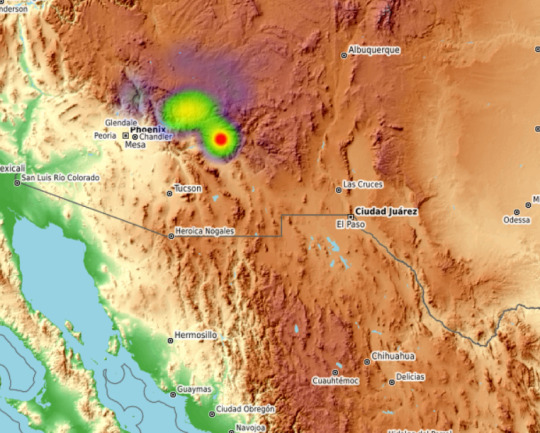

Fourmile Polychrome bowl, AD 1325-1400, central Arizona.
Fourmile Polychrome is a type within White Mountain Red Ware. It's basically contemporaneous with Salado Polychrome, but was made in a different, more northern distribution, by Ancestral Pueblo people who didn't move so far south and congregated around Zuni and east-central Arizona.
Dynamic and bold and more likely to be asymmetrical, Fourmile polychrome is defined by designs in black glaze paint (manganese-based mineral paint with lead in the mix, to make it glossy when it fires and melts) outlined in white.
Both of these types were made by the coil-and-scrape method common to Ancestral (and modern) Pueblo potters (though a small percentage of Salado Polychromes were made by paddle-and-anvil, an argument for the type as an integrative practice...)
24 notes
·
View notes